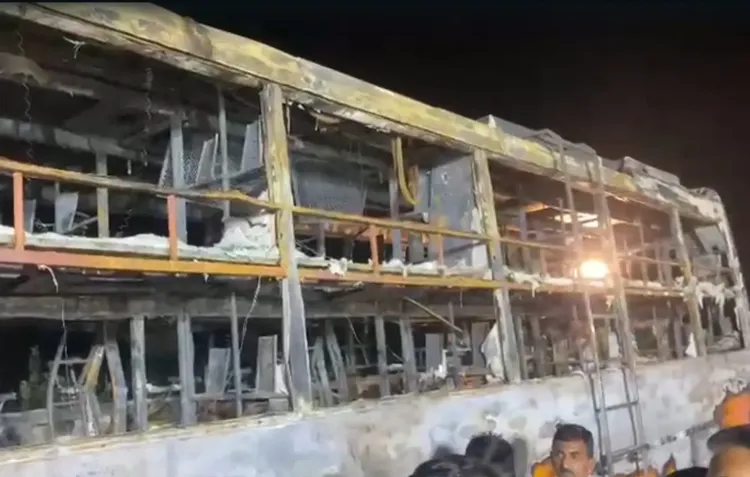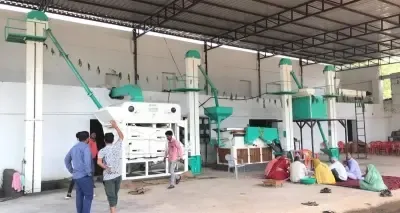What Caused the Jaisalmer Bus Fire Tragedy That Led to 21 Deaths?

Synopsis
Key Takeaways
- 21 fatalities confirmed due to Jaisalmer bus fire.
- Rapid spread of flames attributed to AC gas leak.
- Identification process underway using DNA samples.
- Safety concerns regarding bus design and emergency exits.
- Critical condition for four injured passengers.
Jaipur, Oct 15 (NationPress) The tragic incident of a massive fire in a sleeper bus along the Jaisalmer-Jodhpur route has led to a devastating increase in the death toll, which now stands at 21. Among the victims is a 10-year-old boy who tragically lost his battle for life this morning.
The inferno erupted in the bus around 3:30 PM on Tuesday, swiftly engulfing the AC sleeper bus within moments. Nineteen passengers tragically lost their lives on the spot.
Among the critically injured was 79-year-old Hussain Khan from Jaisalmer, who passed away while being rushed to Jodhpur. This morning, 10-year-old Yunus, a resident of Jodhpur undergoing treatment at Mahatma Gandhi Hospital, also succumbed, raising the confirmed death toll to 21.
Currently, only two victims have been identified. The authorities have returned their bodies to the families after conducting post-mortem examinations. Due to the extent of burns, the other 19 bodies are unidentifiable. To aid in the identification process, officials have commenced collecting DNA samples from relatives at hospitals in both Jodhpur and Jaisalmer.
It is anticipated that the identification of victims will be concluded by this evening. In total, fourteen passengers suffered injuries during the fire, with four individuals remaining in critical condition and requiring ventilator support at Mahatma Gandhi Hospital in Jodhpur.
The injured have been identified as Mahipal Singh, Omaram, Manoj Bhatia, Iqbala, Firoz, Bhaga Bai, Peer Mohammad, Jirraj, Imimata, Vishasha, Ashish, Rafiq, Laxman, and Ubedula.
Eyewitness accounts reveal that the fire spread alarmingly fast—within a mere seven minutes following a suspected short circuit in the bus's battery. The subsequent leak of AC gas is believed to have exacerbated the flames.
The design of the modern sleeper bus, featuring emergency exits solely at the rear, severely restricted the passengers' ability to escape promptly.
This heartbreaking incident has raised significant concerns regarding bus safety standards and emergency preparedness, particularly in vehicles equipped with high-capacity air conditioning systems and limited exit options.










